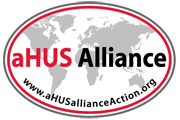Recently information about the Ravulizumab Pregnancy Registry was featured on this site. Ever since Ravulizumab was approved the issue of its use during pregnancy AND breast feeding has been uncertain.
The thalidomide scandal of the 1970s resulted in greater caution when drugs in development were to be taken during pregnancy and breast feeding. This was to protect the foetus and new born from potential abnormalities during their development. Being pregnant was an exclusion criteria in complement inhibitor clinical trials.
These days eculizumab appears generally regarded as alright to be used during pregnancy. It has probably been so from about five years after it had become available. But why has ravulizumab, which has been available for five years now, not achieved that status yet?
Ravulizumab is really eculizumab but re-engineered to last longer between dosing, that is all.
So the question is why would Ravulizumab cause potential birth and development harm and not eculizumab?
So are there issues that differ and matter when it comes to doing harm during pregnancy?
Comparison of eculizumab and ravulizumab pregnancy exposure
| Issue | Eculizumab* | Ravulizumab | Note |
| Drugs inhibit complement | Yes | Yes | 1 |
| Make mother and baby more susceptible to infections | Yes | Yes | 2 |
| Pass through the placenta | Yes | Yes | 3 |
| Have potential to do harm | Yes | Yes | 4 |
| Number of infusions during pregnancy (max 40 weeks) | 20 | 5 | 5 |
| Infusion volume at maximum weight band (mg) | 1200 | 3600 | 6 |
| Total volume infused during pregnancy (mg) | 24000 | 18000 | 7 |
| Foetus/ Baby Adverse Events reported to FDA/all AEs | 33/4919 | 1/722 | 8 |
| Controlled pregnancy exposure trials | No | No | 9 |
| Animal studies equivalent drug dose levels that produced some harm | 4 to 8 times | 0.8 to 2.2 | 10 |
| Specific pregnancy information in prescribing information | Yes | Yes | 11 |
| Evidence of no drug excretion in human milk | Yes | Not known | 12 |
| Breast feeding contra-indicated | No but with caution | Yes | 13 |
- Both eculizumab and Ravulizumab do the same job. They block complement terminal activity, particularly by sticking to complement component C5.
- Blocking complement puts the mother at greater risk of infections, particularly meningococcal infections. These infections could potentially be passed on to the baby. The baby’s developing complement system could be blocked at a time their immune system is not particularly strong anyway.
- They both transfer through the placenta to the foetus. Each is an IgG and can actively transport via FC receptors. This is a natural process that allows maternal antibodies to provide parental immunity to the foetus, but it also means therapeutic antibodies like eculizumab and ravulizumab may also be transferred. The process usually accelerates during the second trimester and is highest in the third.
- Both have the potential to do harm to the baby as shown below.
One or more of the following:
| Pre term birth |
| Low birth weight |
| Size |
| Neo natal death |
| Peri natal death |
| Infant death |
| Serious/Severe infection |
| Growth development |
| Abnormal growth development |
5. In a 40 week pregnancy there could be twenty maintenance infusions of eculizumab at two week intervals but only five eight-weekly infusions of ravulizumab. The number of drug administrations might relate to the number of adverse events, as it would for all patient infusions.
6. At each infusion the volume of ravulizumab entering the blood is three times more than eculizumab. Might there be a concern that the additional volume each time could be too overwhelming for the foetus ? In its immature state it might it be unable to clear the drug as much as the mother is able to do?
7. The total volume of eculizumab infused during a pregnancy would be 25% more than ravulizumab total volume. Could that be a factor too? If total volume is a factor then overall there is more eculizumab than ravulizumab.
8. Since its use began FDA has been collecting data about adverse events (AEs) reported whilst patients have been exposed to eculizumab. In total up to the end of 2024 there have been 4919 AEs reported by aHUS patients to FAERS. Of these, 93 had a reaction category linked to pregnancy. Furthermore of these 33 reported a “reaction” affecting the foetus/baby. There were twelve premature births, seven spontaneous abortions, three elected abortions, two maternal deaths and two foetal deaths. One had foetal distress syndrome and six babies were reported to have growth restriction and low weight.
For comparison there have been 722 AEs reported to the FDA relating to ravulizumab use for aHUS; only nine were categorised as pregnancy related. Just one case reported affected the foetus/baby, one incident of premature birth. Only three of the nine cases listed ravulizumab as the only inhibitor used during pregnancy, the other six involved eculizumab /ravulizumab drug switches. Doctors might have recommend ravulizumab before conception but switched to the eculizumab alternative on confirmation of a pregnancy. Some however were switches from eculizumab to ravulizumab.
9. There have been no controlled trials of pregnancy use with exposure to eculizumab or ravulizumab. There have been numerous case studies of one or more patients across all disease indication for the drugs. The manufacturer cites that there are reports for over 300 cases and that maternal outcomes were good. There is no evidence of a dramatic increase in adverse events. No collective report, if published, could be found for these cases.
An early study of PNH patients and another by the aHUS Registry report some adverse outcomes while using eculizumab. There are no equivalent publications as yet for ravulizumab but the manufacturer has begun a long term study. It takes the form of a registry and is currently recruiting. (See start of this article for more information and a link to the registry).
10. There have been studies of eculizumab and ravulizumab exposure in pregnancy on animals. Using higher weight based doses relative to human equivalent dose levels. For eculizumab doses had to be raised to four to eight times its human equivalent before some harms occurred to some of the foetuses. For ravulizumab some harms occurred at less than the human dose and up to 2.2 times the human dose level.
11. There is specific information about use of both drugs during and after pregnancy in the patient information leaflets included with each vial of each drug. In each the current ” availability of data to inform” is stated. Some information about animal models is given at dosing levels which might produce defects. There are reminders too that aHUS itself is associated with adverse maternal outcomes but no risk data is stated. Also a reminder of there being background risks of birth defects ( two to four percent) and miscarriages (15 to 20 percent) in the general USA population.
12. The issue of the drugs excreting into human milk determines whether breast feeding is suitable or not. After some uncertainty it is has been found through studies that eculizumab does not excrete However there is no similar evidence for ravulizumab, more research is needed.
13. Given the disparity in evidence collected breast feeding while exposed to eculizumab is permitted under caution whilst it is contraindicated still for ravulizumab. .
So amidst some uncertainties the current situation can be summarised as:-
– evidences suggests that some who have been exposed to eculizumab or ravulizumab can experience adverse maternal and foetal outcomes;
-no evidence to suggest that eculizumab exposure results in more adverse outcomes than in the general maternal population;
– sparse evidence of what harm ravulizumab exposure might do;
– the key difference between the two is dose volumes at each infusion ( ravulizumab being much higher) and for the pregnancy duration ( eculizumab being higher):
– no understanding yet of what specifically causes any such harm and whether it is the disease ( aHUS) , the drug ingredients and dose volume or just what may occur in the general population with no aHUS nor complement inhibitor treatment.
-a long term study of ravulizumab exposure in pregnancy could provide some answers in a few years.
– it is also a matter of whether the potential benefit justifies the potential risk.
If this is a concern for someone about using complement inhibitors during pregnancy and when breast feeding , they should consult their healthcare provider, who can weigh the risks and benefits and possibly adjust treatment. Clinical guidelines and ongoing research continue to refine understanding, but caution is currently advised during pregnancy.
Article No. 729

